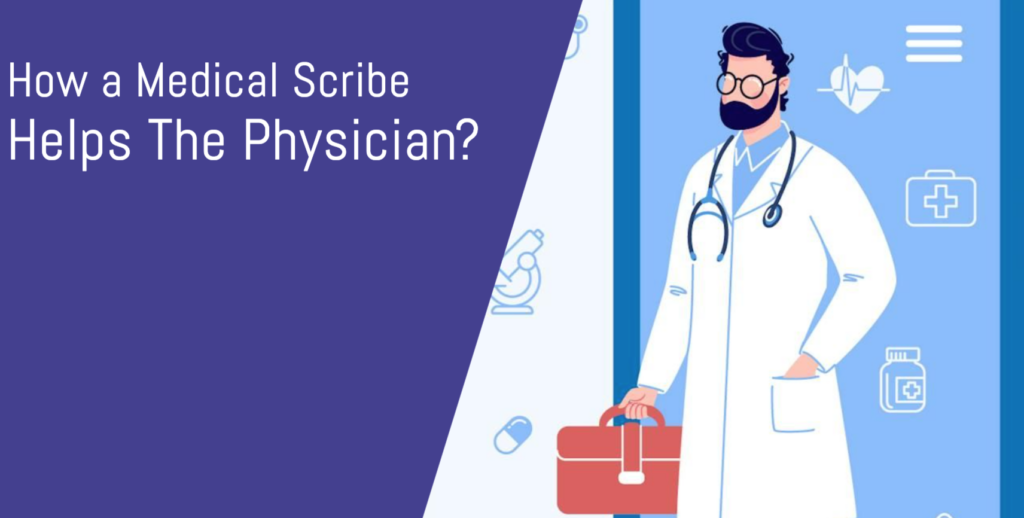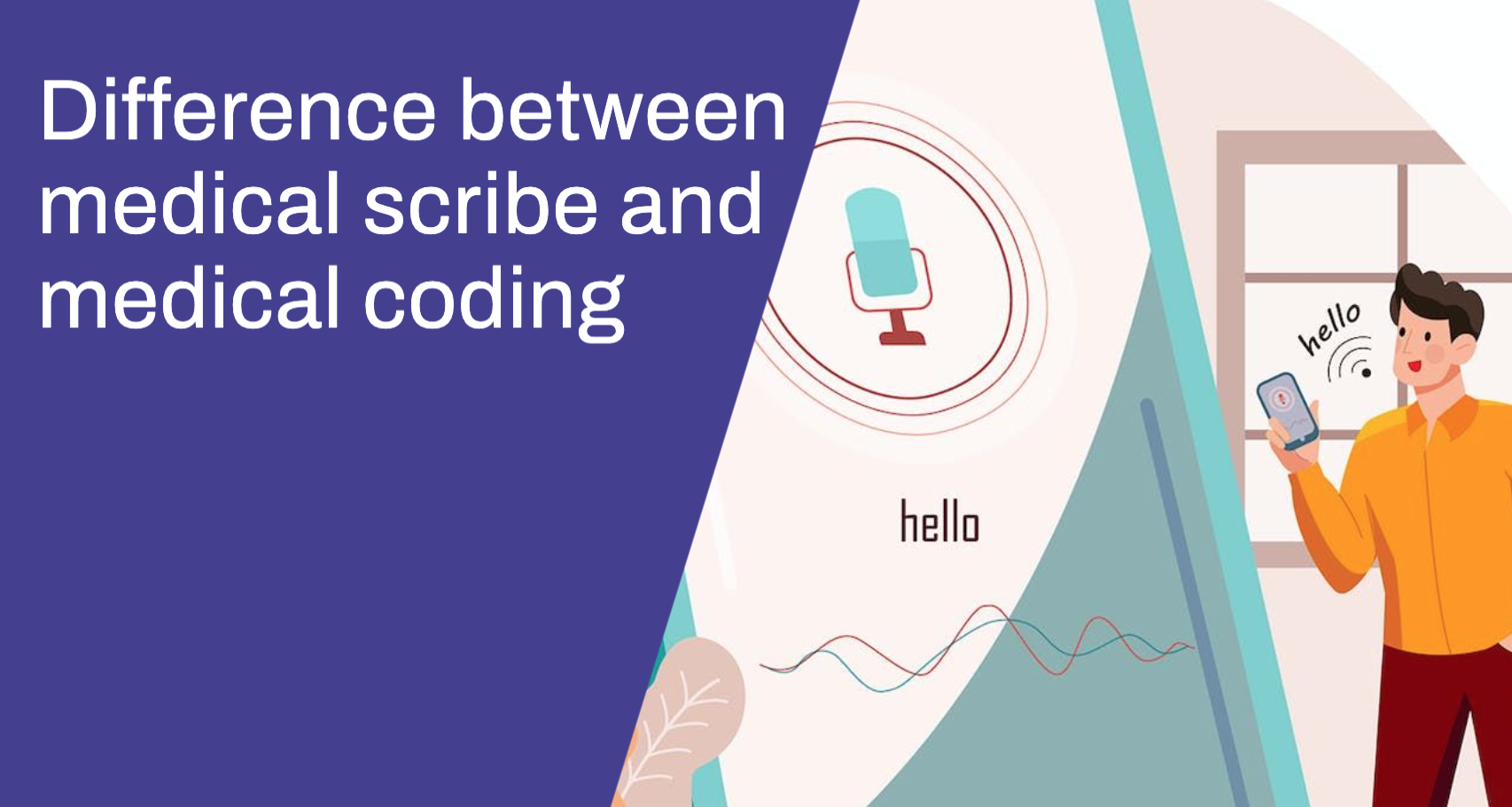
The role of a medical scribe in the contemporary healthcare landscape has emerged as a crucial support system for physicians facing escalating demands in paperwork and electronic health record (EHR) management. A medical scribe is essentially a trained professional tasked with the responsibility of documenting patient encounters, facilitating efficient record-keeping, and allowing physicians to focus more on direct patient care. As the complexities of healthcare administration have grown, physicians find themselves increasingly burdened by the need to navigate extensive paperwork and manage electronic health records, detracting from valuable time spent with patients. In this article, we delve into how medical scribes play a pivotal role in alleviating this administrative burden, enhancing the overall efficiency of healthcare delivery, and ultimately improving the quality of patient care.
History and Evolution of Medical Scribing
- Origins of Medical Scribing: Medical scribing traces its roots to a necessity born out of the increasing complexity of healthcare documentation. In the early days, physicians often managed their records independently, relying on handwritten notes and rudimentary documentation systems. However, as medical practices expanded and technology advanced, the need for a dedicated role to assist in administrative tasks became evident.
- Evolution in Response to Changing Healthcare Needs: The evolution of medical scribing can be linked to the revolutionary changes in healthcare practices. In the late 20th century, with the advent of electronic health records (EHRs) and the digitalization of medical information, physicians faced a paradigm shift in their daily responsibilities. The surge in administrative tasks, such as data entry and documentation, led to a notable strain on their time and resources.
In response to these challenges, the role of the medical scribe began to take shape. Initially, scribes were primarily focused on transcribing physician dictations and maintaining accurate records. However, as healthcare continued to evolve, so did the responsibilities of a medical scribe.
Today, medical scribes are not only responsible for documentation but have become integral members of the healthcare team. Their role has expanded to include real-time data entry, assistance during patient examinations, and collaboration with physicians in organising and managing medical information. The evolution of medical scribing highlights its adaptability to the changing landscape of healthcare, demonstrating its effectiveness in addressing the growing administrative demands on physicians and ensuring the seamless integration of technology into medical practices.
Efficiency and time management
Medical scribes play a pivotal role in enhancing the efficiency of physicians by taking on various administrative and documentation tasks. These professionals are trained to handle a wide range of responsibilities, allowing physicians to concentrate on providing quality care to their patients.
One way medical scribes contribute to efficiency is through the documentation of patient encounters. Scribes adeptly record the details of medical histories, physical examinations, and treatment plans in real-time, ensuring accurate and comprehensive documentation. By entrusting this task to scribes, physicians can streamline their workflow and spend more time interacting with patients. This not only facilitates better communication between healthcare providers and patients but also enables physicians to make more informed decisions based on accurate and up-to-date information.
Medical scribes can assist with managing electronic health records (EHRs). They input and update patient information, laboratory results, and other critical data, reducing the administrative burden on physicians. This allows healthcare providers to focus on diagnosing and treating patients rather than navigating complex EHR systems. Scribes also play a crucial role in organising and prioritising tasks, ensuring that physicians can allocate their time effectively and address urgent matters promptly.
Improved patient interaction
One of the main ways a medical scribe contributes to increased time with patients is by taking on the responsibility of documentation. Instead of the physician spending valuable time during and after patient encounters on record-keeping, a medical scribe can efficiently and accurately document the details of the visit. This includes capturing medical histories, noting physical examinations, and recording treatment plans in real-time. With the burden of documentation lifted, physicians can redirect their attention towards engaging with patients on a more personal level.
Medical scribes also play a role in managing electronic health records (EHRs). By handling data input, updates, and navigating EHR systems, scribes save physicians the time and effort required for administrative tasks. This not only streamlines the workflow but also ensures that physicians have the freedom to concentrate on meaningful interactions with patients, addressing their concerns, and explaining treatment plans in a clear and thorough manner.
The positive impact on doctor-patient relationships is evident in the enhanced communication and connection between physicians and their patients. With more time freed up, physicians can engage in active listening, empathise with patients, and answer questions comprehensively. Patients, in turn, feel more valued and understood, leading to increased trust in their healthcare provider. Improved communication also allows physicians to better educate patients about their conditions and involve them in decision-making processes, leading to a more collaborative and patient-centred approach to healthcare.
Reducing physician burnout
The link between administrative burdens and physician burnout is a well-established and concerning issue in the healthcare industry. Physicians often face overwhelming amounts of paperwork, documentation, and administrative tasks that can detract from their primary focus on patient care. This chronic burden contributes significantly to burnout, characterized by emotional exhaustion, depersonalization, and a reduced sense of personal accomplishment among healthcare professionals.
Medical transcription plays a crucial role in alleviating these administrative pressures on physicians. By taking over documentation tasks, scribes allow physicians to focus more on patient interactions and medical decision-making. Scribes are trained to efficiently handle real-time documentation of patient encounters, ensuring accurate and timely records without the physician having to spend excessive time on administrative tasks after each visit.
The impact of scribes on alleviating administrative burdens extends beyond documentation. Scribes can assist with tasks such as organising and prioritising patient information, coordinating communication between healthcare team members, and managing logistics related to patient care. By handling these administrative aspects, scribes enable physicians to spend more time on direct patient care, leading to improved job satisfaction and potentially reducing the risk of burnout.
Training and Qualifications for Medical Scribes
In the rapidly evolving landscape of healthcare, the role of medical scribes has gained prominence, acting as essential support to healthcare professionals in managing and documenting patient interactions. For individuals aspiring to embark on a career as a medical scribe, acquiring the necessary training and qualifications is paramount. The training process for medical scribes is designed to equip them with the skills and knowledge required to fulfil their responsibilities effectively.
Medical scribe training typically encompasses a comprehensive understanding of medical terminology, procedures, and documentation practices. This is crucial, as scribes play a pivotal role in accurately transcribing patient information, medical histories, and treatment plans. A solid grasp of medical language enables them to communicate effectively with healthcare professionals, ensuring precision and clarity in record-keeping. Scribes often undergo specialised courses that cover a spectrum of medical disciplines, allowing them to navigate diverse healthcare settings with proficiency.
Furthermore, qualifications for medical scribes may vary, but many employers seek candidates with a background in healthcare or a related field. This could include individuals with degrees in biology, pre-medical studies, or other health sciences. Some training programmes may also include on-the-job training, providing practical experience in real healthcare settings. This hands-on experience is invaluable, allowing aspiring scribes to apply their theoretical knowledge in a practical context, refining their skills, and preparing them for the intricacies of the job.
The importance of medical scribes understanding medical terminology and procedures cannot be overstated. Inaccuracies or misunderstandings in documentation could have serious consequences for patient care and overall healthcare operations. The ability to comprehend and articulate medical information ensures that scribes contribute to the efficiency and accuracy of medical records, facilitating seamless communication between healthcare professionals and optimising the overall quality of patient care. In essence, the training and qualifications of medical scribes serve as a cornerstone for their effectiveness in supporting healthcare providers and enhancing the integrity of medical documentation.
Technological Integration in Medical Scribing
The incorporation of advanced technologies aims to significantly enhance the effectiveness and efficiency of medical scribes, who play a crucial role in ensuring accurate and timely recording of patient interactions, diagnoses, and treatment plans.
One notable advancement in technological integration within medical transcription is the utilisation of voice recognition systems. Voice recognition software enables medical scribes to transcribe spoken words into written text with remarkable precision. This not only expedites the documentation process but also reduces the likelihood of errors that may occur during manual transcription. By harnessing the power of voice recognition, medical scribes can focus more on the patient interaction itself, ensuring a more natural and engaging experience while still maintaining detailed and accurate records.
Artificial intelligence (AI) is another groundbreaking innovation in the realm of medical writing. AI algorithms are designed to analyse and interpret complex medical data, aiding medical scribes in tasks such as extracting relevant information from patient records, identifying patterns in medical histories, and even assisting in diagnostic processes. The integration of AI in medical transcription not only accelerates data processing but also contributes to improved decision-making by providing valuable insights and suggestions based on vast datasets.

